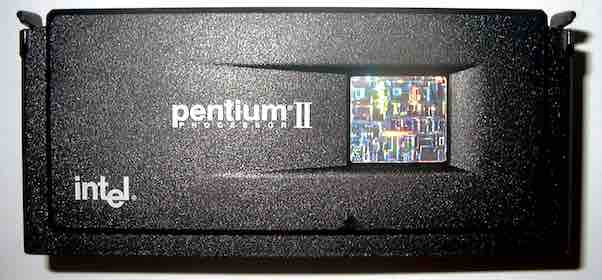
Intel Corporation’s semiconductor and computing technology business grows through an appropriate generic competitive strategy and effective intensive growth strategies. According to Michael Porter’s model, the company’s generic strategy determines how the business achieves and maintains competitive advantages, such as brand popularity and the strengths enumerated in the SWOT analysis of Intel. On the other hand, the intensive growth strategies define what the firm does to achieve growth in its target markets. Intel’s generic competitive strategy is based on innovation that ensures cutting-edge features that differentiate products from competitors. Intel’s intensive growth strategies emphasize the cutting-edge technologies in products that shape the industry and attract target customers.
Intel’s generic strategy develops competitive advantages through rapid innovation to lead the industry despite competitors, such as AMD, IBM, and Samsung. This innovation is also critical to the effectiveness of Intel’s intensive growth strategies.
Intel’s Generic Competitive Strategy
Intel’s generic competitive strategy is differentiation. In Porter’s model, this generic strategy builds competitive advantage based on product quality or features, customer service, and brand image management. In Intel’s case, differentiation is applied as a generic competitive strategy through product quality and features. For example, the company invests in rapid innovation to produce cutting-edge microprocessors and related technological products. The advanced features of these products ensure leadership in the global market, helping fulfill Intel’s mission statement and vision statement. The implementation of differentiation as a generic strategy helps the company maintain its competitive advantage despite strong competitors, like AMD.
Differentiation requires key strategic objectives that make Intel an industry leader. One of these strategic objectives is to rapidly innovate to develop new or enhanced products that competitors cannot easily match. This innovation should address the competitive landscape shown in the Five Forces analysis of Intel. For example, in implementing this generic competitive strategy, developing faster and more energy-efficient microprocessors for mobile products can strengthen the company’s industry position. Also, based on differentiation as a generic competitive strategy, another objective is to increase the company’s marketing aggressiveness to support competitive advantages in the market for mobile chips. This objective is based on Intel’s limited presence in the mobile device market.
Intel’s Intensive Growth Strategies
Product Development (Primary). Intel Corporation keeps product development as its primary intensive growth strategy. In the Ansoff Matrix, product development supports business growth through new products that increase revenues. For example, Intel’s operations management supports business growth and global market dominance through the effective development and introduction of new processors. This intensive growth strategy makes the company’s new products attractive and profitable, thereby ensuring business growth. Product development and Intel’s differentiation generic strategy both support competitive advantage based on product quality and features. A strategic objective based on product development is to grow the company through rapid innovation. A related strategic objective based on this intensive growth strategy is to increase Intel’s R&D investment for new product development.
Market Penetration (Secondary). The market penetration intensive growth strategy involves selling more products to current customers. Intel implements market penetration as a secondary intensive strategy through business partnerships and aggressive deals that favor growth and a strong market presence. For example, the company has special agreements with computer developers and manufacturers to use Intel microprocessors in their products, as in the case of Microsoft’s Surface devices. The generic competitive strategy of differentiation pushes the company to develop competitive advantages based on advanced features and high quality in product development. Such features and quality support the effective implementation of market penetration as an intensive strategy for the company’s growth in the semiconductor and microprocessor market. A strategic objective based on market penetration is to grow the business through aggressive marketing strategies and corresponding tactics in Intel’s marketing mix or 4Ps.
Market Development (Supporting). Market development is an intensive growth strategy that serves a supporting role in Intel Corporation’s progress. In implementing this intensive strategy, growth is achieved by entering new markets or market segments, or by creating new markets for novel products. In this case, Intel applies market development when it creates entirely new product lines. For example, the introduction of new mobile chips developed the company’s presence in the mobile device market. The generic strategy of differentiation creates a competitive advantage that increases Intel’s potential success in new markets or market segments when implementing market development as an intensive growth strategy. A strategic objective based on this intensive strategy is to grow Intel through novel products to enter new markets, such as the market for smart home systems.
Diversification (Supporting). Intel uses diversification as a supporting intensive growth strategy. This intensive strategy facilitates the company’s growth through new business. For example, the 2016 acquisition of the German company, Ascending Technologies, which develops unmanned aerial vehicles, contributed to the diversification of Intel’s business. The generic competitive strategy of differentiation, when applied within the context of diversification, ensures the company’s competitive advantage through products that attract target customers. A strategic objective based on diversification as an intensive strategy is to grow Intel’s business through more acquisitions in other industries.
References
- Ariyanti, D. A., Afrianti, A. D., Yarangga, M. M., Andarini, S., & Kusumasari, I. R. (2024). Business strategy development and planning. Journal of Finance and Business Digital, 3(2), 85-94.
- El Merroun, M., Janos, B. I., & Alkhlaifat, O. (2024). Achieving environmental sustainability through the adoption of Industry 4.0: An exploratory case study within the information technology industry. Logistics, Supply Chain, Sustainability and Global Challenges, 15(Special Issue), 10-28.
- Intel Corporation – Form 10-K.
- Intel Corporation – Strategic Priorities.
- Intel Shapes the Future of Technology.